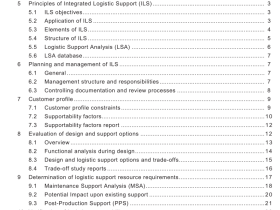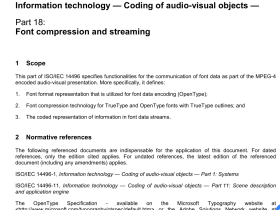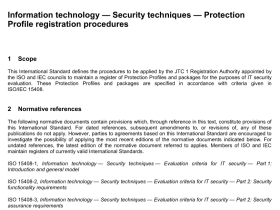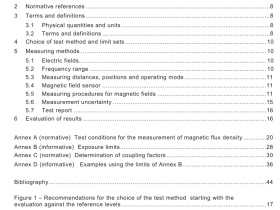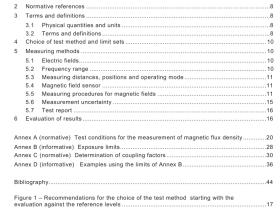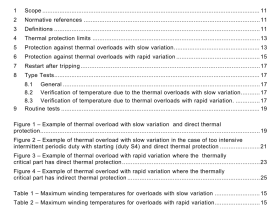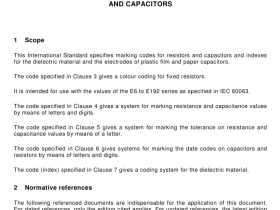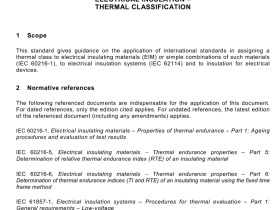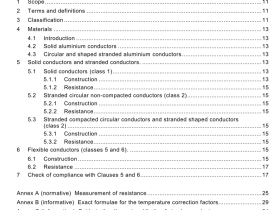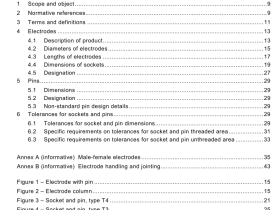IEC 61970-2 pdf download
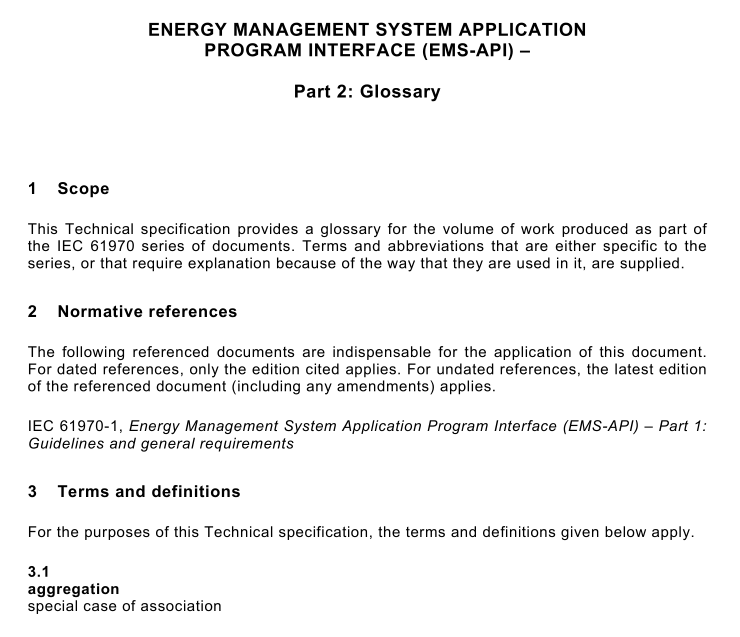
IEC 61970-2 pdf download Energy management system application program interface (EMS-API) – Part 2: Glossary
1 Scope
This Technical specification provides a glossary for the volume of work produced as part ofthe lEC 61970 series of documents.Terms and abbreviations that are either specific to theseries, or that require explanation because of the way that they are used in it, are supplied.
Normative references
The following referenced documents are indispensable for the application of this document.For dated references, only the edition cited applies.For undated references, the latest editionof the referenced document (including any amendments) applies.
IEC 61970-1,Energy Management System Application Program Ilnterface (EMS-APl/) – Part 1:Guidelines and general requirements
3 Terms and definitions
For the purposes of this Technical specification, the terms and definitions given below apply.
3.1
aggregation
special case of association
3.2
application
piece of software that comprises one or more components that perform some businessfunction in a given domain.The important aspect is the functionality performed and not thepackaging of the software. An example would be a word processor. It has a fairly wellunderstood functionality but the components that are actually installed can look very differentdepending on the vendor.
3.3
application context
collection of applications working together as an organizational unit to accomplish some high-level objective
3.4
pplication Program lnterfaceAPI
set of public functions provided by an executable application component for use by otherexecutable application components
3.5
association
connection between classes that can be assigned a role
3.6
cardinality from
multiplicity from the class that is being described, ‘0’ is an optional association and ‘n’meansthat an unspecified number of associations are allowed
3.7
cardinality to
multiplicity and cardinality of the class on the other side of the association
3.8
common Information ModelCIM
abstract model that represents all of the major objects in an electric utility enterprise that aretypically contained in an Energy Management System(EMS) information model.By providinga standard way of representing power system resources as object classes and attributesalong with their relationships,the ClM facilitates the integration of EMS applicationsdeveloped independently by different vendors,betweenentire EMS’s developedindependently or between an’EMS and other systems concerned with different aspects ofpower operations,such as generation or distribution management.
3.9
CIM context
run-time environment within which all application instances operate to achieve a commonobjective
3.10
class
description of an object found in the real world that needs to be represented as part of theoverall power system model or a set of resources to which a given set of properties apply
3.11
communication profiles
particular protocols and protocol services that are to be used for information exchangebetween separate server platforms in a component execution system
3.12
component
reusable software building block: a pre-built piece of encapsulated application code that canbe combined with other components and with handwritten code to rapidly produce a customapplication. In order to qualify as a component, the application code must provide a standardinterface that enables other parts of the application to invoke its functions and to access andmanipulate the data within the component.For compiled languages, a component is usually afile of executable code (*.exe or *.dll) or resource files containing data used by this or otherapplications.The component model defines the structure of the interface.
